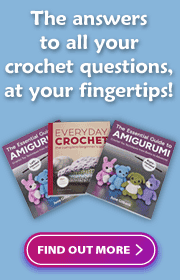My favourite everyday puffy winter coat is still going strong after 6 years apart from one thing: the padding inside the collar has worn out and split apart so there’s no insulation at the back of my neck. I don’t believe in ‘disposable’ fast fashion and I really like this coat, so I put up […]

Archive for Category: Sewing
recovery clothing for dogs
It’s been a year since my pup Maggie recovered from her surgery to remove a tumour from her shoulder. It was such an exhausting and traumatic time, but she made a full recovery and so far there’s no sign of reoccurrence, and she’s a very happy, healthy and energetic almost-12 year old! Now that things […]
review: Contoured Face Mask sewing pattern
I’ve been experimenting with various mask sewing patterns since April. With the possibility of a second wave of COVID-19 imminent as schools start up again, I decided to spend part of my Labour Day long weekend making a batch of masks I’ll really enjoy wearing, now I’ve settled on my favourite design. This is the […]
sewing a travel pillow
I’m visiting my parents in the UK this week, and I decided to make a quick travel pillow for the flights. I’d looked into buying a travel pillow, but they all seemed far too bulky. All I want is something to support my head as I attempt to sleep on the plane. Here’s what I […]
finger protector for crocheters (or knitters)
When I was writing my new book, I had a lot of project samples to crochet in a short period of time, and that’s pretty hard on the hands. This is how I crochet (and this is my meerkat amigurumi, not a book project!) When I’ve been crocheting for a while, the yarn starts to […]
book review: Stuffed Animals
As always, I was not compensated for this review, and the following is based on my honest opinions! I’ve known Abby through craft blogging circles for years – you may also know her from her blog, While She Naps – and I’ve been eagerly anticipating this book since the day she first announced she’d be […]
review: Mend It Better
I won this book through its blog tour, so I decided to review it for you. The following, as always, is based on my honest opinions! Overview Mend It Better: Creative Patching, Darning, and Stitching by Kristin M Roach, who you may know from her blog Craft Leftovers, is a combination book consisting of basic […]
beanbag smartphone stand
I’m so busy these days that I rarely have any time for non-business-related crafting. In fact, I haven’t made anything just for fun since Christmas (and I haven’t yet had a chance to show you that project either!) We took two much-needed days off at the end of last week, and I finally had a […]














